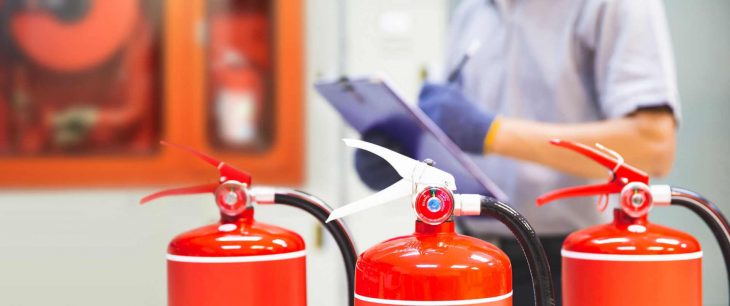
If you are the responsible person for fire safety in your organisation, you are required to carry out regular fire risk assessments. By law, if you employ five people or more, you must keep a written record of every fire risk assessment. In the assessment, you must identify fire hazards and evaluate, remove or reduce risks. You must also prepare an emergency plan and provide fire safety instructions and training so staff know what they need to do in the event of a fire.
The assessment must take account of the fire safety of the whole premises, including any areas that are seldom used. It’s important to carry out a tour of the premises as you assess each area, and be systematic and thorough. Make sure you also allow enough time to be thorough.
There are a number of elements you’ll need to consider as part of the fire safety risk assessment:
When assessing the risk from fire hazards, you need to identify all the elements that combine to create a fire: a source of ignition, fuel, and oxygen. As fire requires all three elements, you must minimise the risks of all three coming together.
When carrying out a fire risk assessment, you need to consider everyone who will be at risk, paying particular attention to those who may be vulnerable because of disabilities, those working in isolated areas, visitors who will be unfamiliar with the premises, and people who may have language difficulties.
When evaluating the risk of a fire starting on your business premises, you need to consider sources of ignition, such as faulty electrical equipment, accidents, smoking materials that are not properly extinguished, etc. Make sure any combustible materials, e.g. flammable materials, liquids and gases, are kept away from possible sources of ignition and stored safely. Make sure the bins are emptied regularly and waste paper is disposed of. You need to ensure that combustible wall, floor and ceiling linings, such as polystyrene or carpet tiles, are either removed or treated to reduce the rate of flame spread if a fire did break out.
You can also minimise oxygen sources by closing windows and doors in rooms that no one is using, and by making sure all the doors and windows are closed at night when the building is empty.
During your fire risk assessment, you need to ensure that if a fire is detected, there is time for the alarm to be raised quickly enough for anyone in the building to escape to a place of safety. In small premises where everyone in the building will immediately be aware of any fire or be able to clearly hear a warning shout, electrical fire warning systems may not be required. In larger premises, the installation of fire alarm systems with break-glass boxes and loud speakers will ensure that if a fire breaks out in one part of the premises, it is quick and simple to warn everyone of the need to evacuate. As part of your fire risk assessment, you need to check that the warning system is adequate and in working order, and that the risk of malicious activation is kept to a minimum.
Fire extinguishers and fire blankets are an effective way of reducing the risk of a small fire developing into a large one. It is therefore essential that your fire risk assessment ensures that fire extinguishers are not out-of-date, that the extinguishers are suitable for purpose and positioned where people can get to them easily in the event of a fire, and that there are enough employees trained in their use should the need arise. Adequate signage needs to be provided to enable people to locate firefighting equipment.
When carrying out a fire risk assessment, you need to ensure there are enough escape routes for all occupants to get to a place of safety, and that the escape routes are clearly and accurately signposted. All fire doors must be kept clear at all times, and all occupants of the building must be aware of the need to keep them that way.
In larger buildings, there may be a need for the installation of emergency lighting to help illuminate escape routes.
Fire risk assessments of commercial premises need to be completed and logged on a regular basis. For more detailed information and a fire risk assessment checklist, download the appropriate workplace assessment guide.
Alternatively, hire a specialist consultancy to undertake your fire risk assessment. This will ensure your business fulfils its legal requirements and, more importantly, that all your staff and visitors are protected as much as possible from any fire risk.